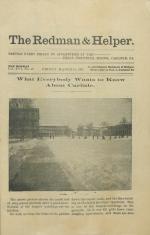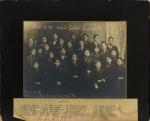Student file of Frank Cayou, a member of the Omaha Nation, who entered the school on October 8, 1893, graduated in 1896, and departed on September 8, 1899. The file contains news clippings, a student information card, a returned student survey, a former student response postcard, a report after leaving, and correspondence.
The file…



















